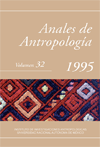¿Qué es la magia? Un análisis filológico y filosófico
Main Article Content
Abstract
The characterizations of magic are questioned: 1) pseudo-science, pseudo-art (Frazer), pseudo-religion (Mauss); 2) evolved animistic thought (Taylor); 3) symbolic manifestation of affections functioning as catharsis which liberates action inhibiting fears (Collingwood and Wittgenstein). Palazón asserts, talking about the “laws” of homeopathic magic which are identified as metonimy, metaphor, or analogy (with its figures, as registered by Foucault), that they are to be found at the basis of associative thought. Finally, the author presents her objections to the hypothesis that the magical phase confuses words for things (Foucault): she argues that both words and things, in past and present times, have been and still are either perceived as distinctly different or confused with one another, according to an elastic principle of reality.
Downloads
Download data is not yet available.
Article Details
How to Cite
Palazón, M. R. (2009). ¿Qué es la magia? Un análisis filológico y filosófico. Annals of Anthropology, 32(1). https://doi.org/10.22201/iia.24486221e.1995.1.351
Citas en Dimensions Service
Esta revista usa una licencia CC del tipo CC BY-NC-ND 3.0. Se maneja bajo el esquema de acceso abierto, con una licencia Creative Commons Attribution-NonCommercial-NoDerivs 3.0 Unported.
